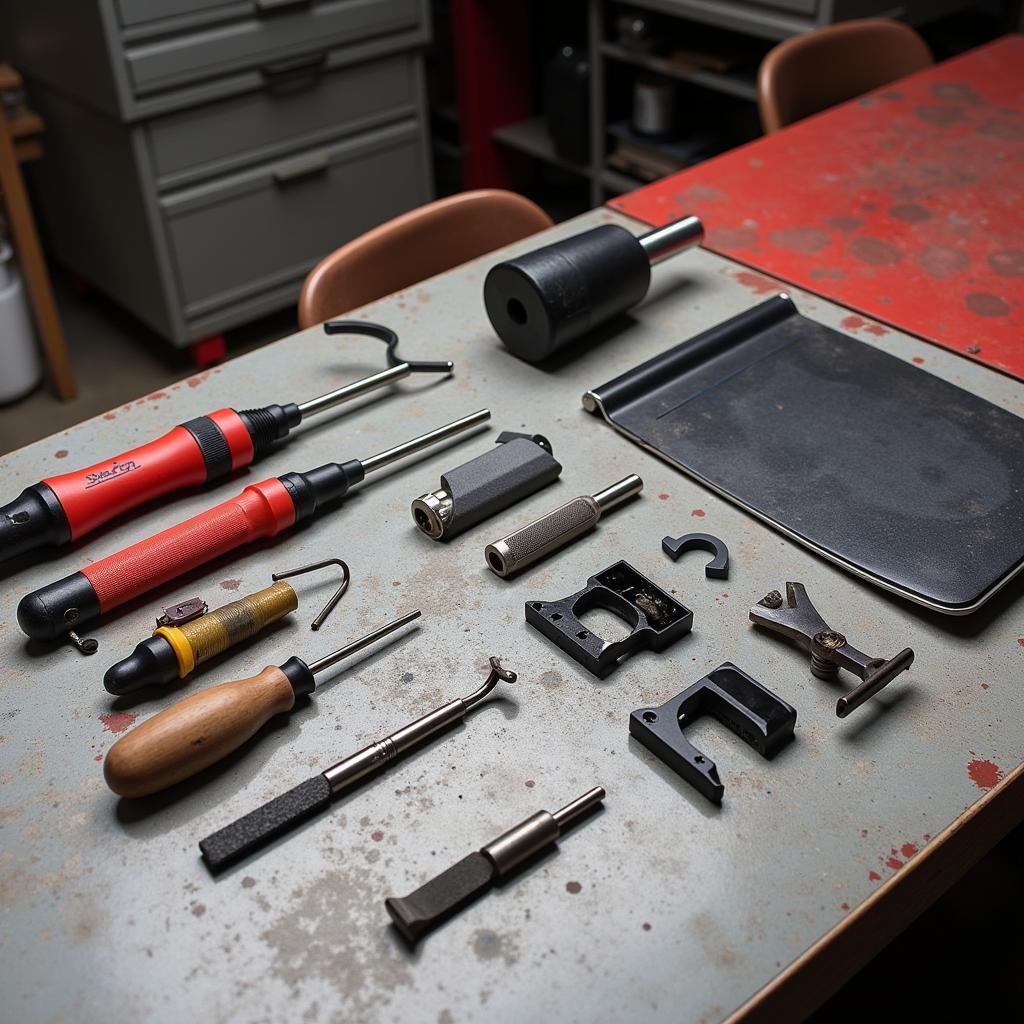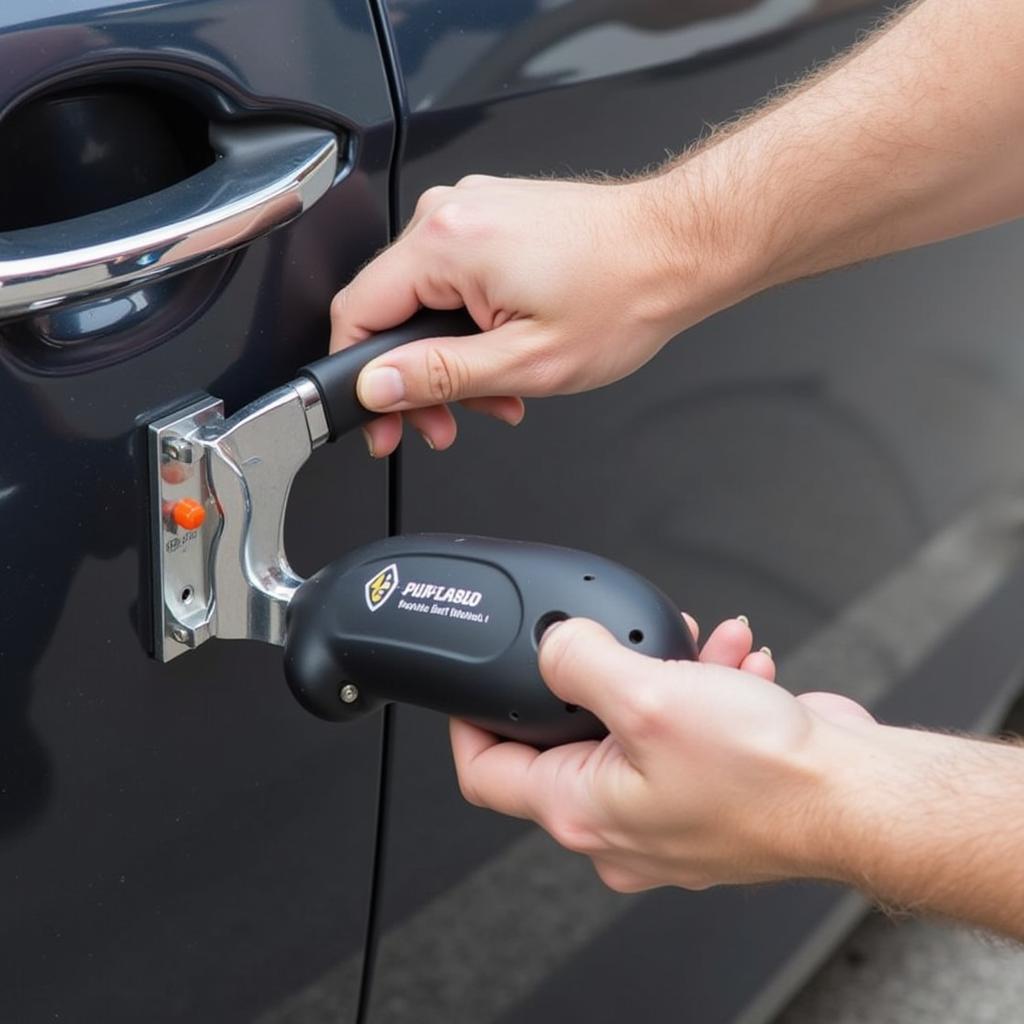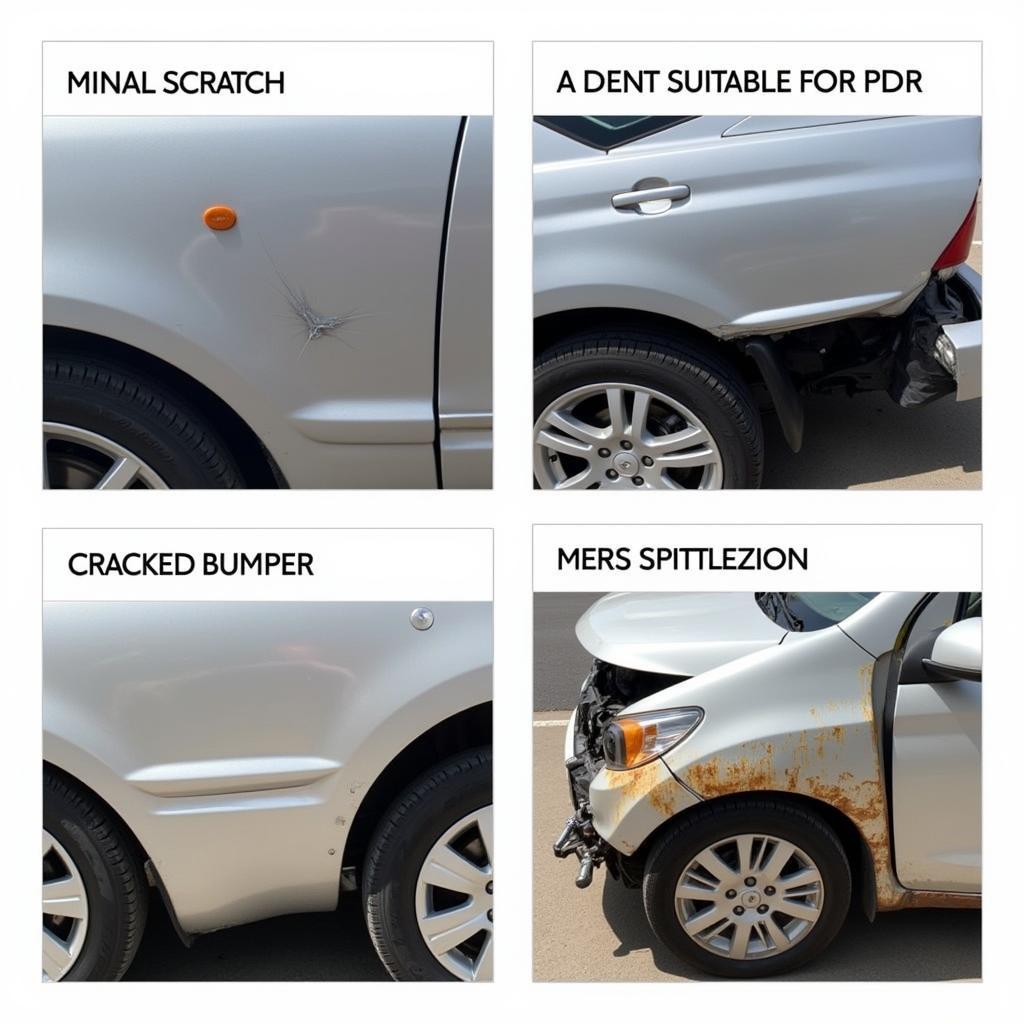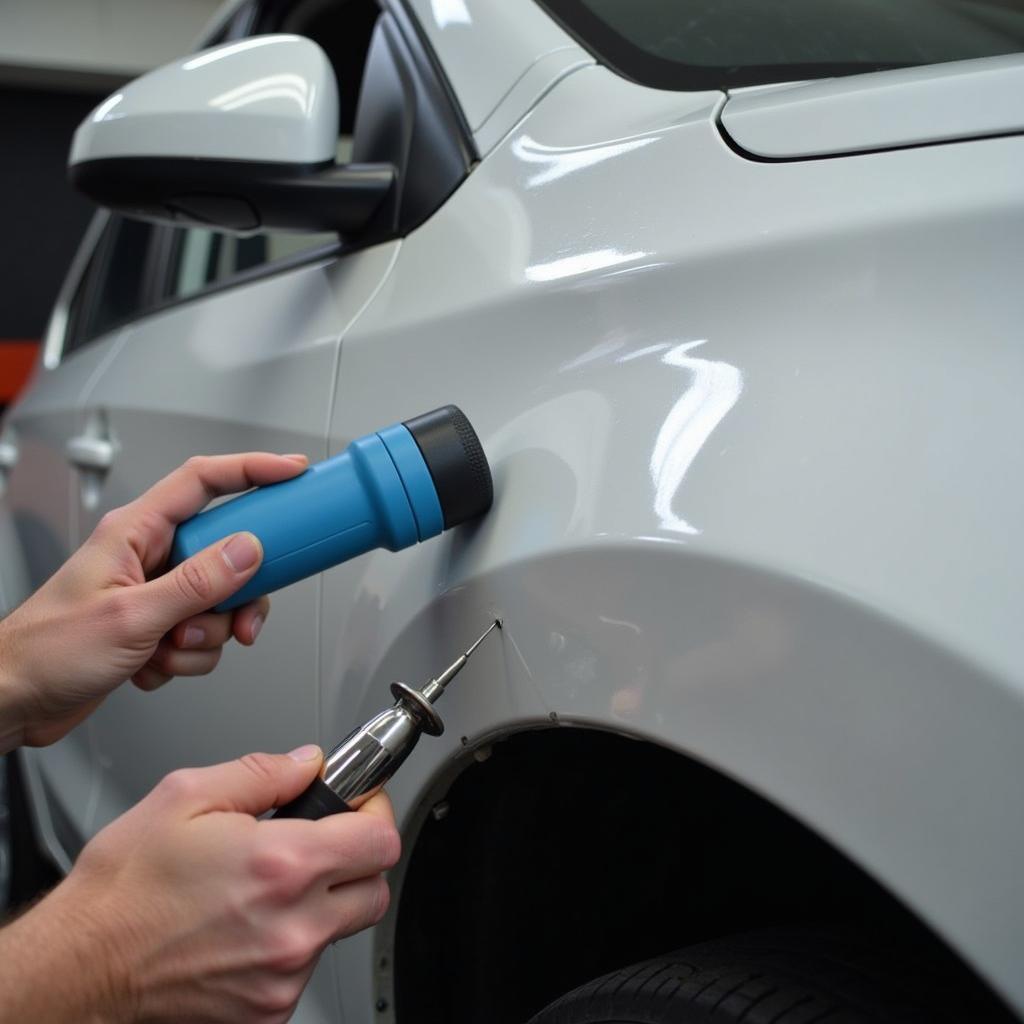
Paintless Dent Repair Tools Kit
Paintless dent repair (PDR) is a cost-effective and environmentally friendly method for removing minor dents and dings from car bodies without affecting the original paint job. This involves using specialized car body paintless dent repair tools, like dent pullers and other dent removal tools, to massage the metal back to its original shape. Finding the right tools is crucial for a successful PDR job. This guide will delve into the world of PDR, exploring various tools, techniques, and tips for both professionals and DIY enthusiasts.
Understanding Paintless Dent Repair (PDR) and its Tools
PDR is a technique used to repair minor dents, dings, and hail damage on car bodies without the need for traditional bodywork methods like filling and repainting. This makes it a quicker, cheaper, and more eco-friendly alternative. The process relies on carefully manipulating the metal back to its original form using specialized car body paintless dent repair tools, including dent pullers, glue tabs, and various levers and rods. Choosing the right dent removal tools depends on the dent’s size, location, and depth.
Why Choose PDR?
- Preserves Original Paint: PDR maintains the factory finish of your car, avoiding the risks of color mismatches and overspray associated with repainting.
- Cost-Effective: Compared to traditional bodywork, PDR is significantly less expensive.
- Time-Saving: PDR repairs can often be completed within a few hours, minimizing downtime.
- Environmentally Friendly: No paints, thinners, or fillers are used, reducing the environmental impact.
 Paintless Dent Repair Tools Kit
Paintless Dent Repair Tools Kit
Essential Car Body Paintless Dent Repair Tools
There are several key tools used in PDR, each designed for specific purposes:
- Dent Pullers: These tools use suction or leverage to pull dents outward. Different types of dent pullers exist, including slide hammer dent pullers, bridge dent pullers, and suction cup dent pullers.
- Glue Tabs: Glue tabs are attached to the dent with specialized glue and then pulled with a slide hammer or another pulling device. They are particularly useful for reaching dents in difficult areas.
- Knock-Down Tools: These tools are used to gently tap down raised areas around the dent, refining the repair and blending it seamlessly with the surrounding surface.
- Reflective Board: A reflective board helps technicians see the contours of the dent and monitor their progress during the repair process.
Choosing the Right Dent Puller
The type of dent puller you need depends on the specific dent you’re addressing. For small dents, a suction cup dent puller might suffice. Larger or more complex dents may require a slide hammer dent puller or a bridge dent puller.
Mastering the Art of Dent Removal: Techniques and Tips
PDR requires skill and patience. Here are some tips for effective dent removal:
- Assess the Dent: Carefully examine the dent’s size, depth, and location to determine the appropriate tools and techniques.
- Access the Dent: Gaining access to the back of the dent is often necessary, which might involve removing interior panels or trim.
- Apply the Right Pressure: Use gentle, controlled pressure when working with PDR tools to avoid further damage.
- Check Your Progress: Frequently use a reflective board to monitor your progress and ensure a smooth, even repair.
DIY vs. Professional PDR
While some minor dents can be addressed with DIY PDR kits, more complex repairs are best left to professionals. Professionals have the experience, expertise, and specialized tools necessary to achieve flawless results.
“PDR is a true art form,” says John Smith, Lead Technician at AutoBody Specialists. “It takes years of practice and a deep understanding of metal behavior to master the techniques and achieve perfect results.”
Advanced Dent Removal Techniques
Beyond the basics, advanced PDR techniques exist for addressing more challenging dents:
- Blending: This technique involves subtly manipulating the metal around the dent to create a seamless transition between the repaired area and the surrounding surface.
- Pushing and Pulling: A combination of pushing and pulling techniques is often used to address complex dents with varying depths and shapes.
 PDR Process on a Car Door
PDR Process on a Car Door
Conclusion: Achieving Flawless Results with Car Body Paintless Dent Repair Tools
Car body paintless dent repair tools, including dent pullers and dent removal tools, offer a highly effective solution for addressing minor dents and dings. Whether you’re a DIY enthusiast or a professional technician, understanding the various tools and techniques is essential for achieving flawless results. Choosing the right dent puller, using appropriate techniques, and practicing patience will help you restore your car’s appearance without compromising its original paint job.
FAQ
-
How long does a typical PDR repair take? A typical PDR repair can take anywhere from 30 minutes to a few hours, depending on the dent’s size and complexity.
-
Can all dents be repaired with PDR? No, PDR is not suitable for all dents. Deep dents, dents with sharp creases, or dents that have damaged the paint are typically not repairable with PDR.
-
Is PDR safe for my car’s paint? Yes, PDR is safe for your car’s paint when performed correctly. It preserves the original factory finish.
-
How much does PDR cost? PDR is generally less expensive than traditional bodywork.
-
What are the most common car body paintless dent repair tools? The most common tools are dent pullers (various types), glue tabs, knock-down tools, and a reflective board.
-
Can I do PDR myself? While DIY PDR kits are available, complex repairs are best left to professionals.
-
Where can I find qualified PDR technicians? You can find qualified PDR technicians through online directories, auto body shops, or by asking for referrals.
Need help with dent removal?
Contact us via WhatsApp: +1(641)206-8880, Email: [email protected]. We have a 24/7 customer support team.
We also have more articles related to car repair and diagnostics, check them out for more helpful guides!




